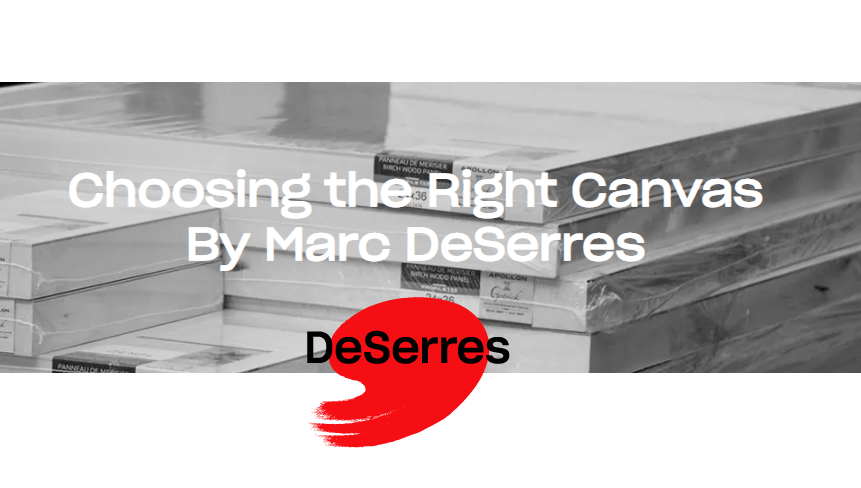A canvas is to a painter what paper is to a writer, it marks the beginning of your creative journey.
To help you choose the perfect canvas, Mr. DeSerres will walk you through the largest canvas inventory in Canada and share some of his favourites.
Marc DeSerres
President
The preparation
Most of our canvases are already primed, which means that several layers of gesso have been applied. The gesso prevents the paint from being absorbed by the canvas and promotes surface stability. Your canvas is therefore immediately ready for use.
Our canvases are mounted on frames
A canvas is like the skin of a drum, it must be well tuned to make creativity resonate! Tap your canvas; it should provide good tension and bounce for a pleasant creative experience. Our canvases are mounted on wedge frames or frames with nested uprights. Thanks to wedges (small wooden pieces) that are inserted in each corner, you can easily play with canvas tension. These wedges are used to tighten loosened canvases (e. g. after painting on them); they should be inserted and gently tapped until the fabric is tight again.
Our different sizes
We select our sizes to encourage new ways to inspire you. Wide, narrow, small or large, a variety of canvases are available! Our smallest canvas measures 4 x 4 inches and our largest 60 x 96 inches. Discover the advantages of each size.
Gallery canvases
Gallery canvases offer a professional quality painting surface and are mounted on 1.5-inch dummy frames. They’re more expensive than regular canvases, but they’re also more resistant, which prevents unwanted warping. Gallery canvases are recommended if you enjoy creating large-scale paintings. The advantage: They don’t necessarily require framing, as the false frame can be painted for a more refined finish.
Regular canvases
Regular canvases are mounted on ¾-inch thick dummy frames. They’re more economical than Gallery canvases, and prices vary according to size. We recommend this canvas if you enjoy framing your finished creations.
Wood panels
Used long before canvases, wood panels are super resistant and fun to work with. They offer a rigid surface ideal for acrylic painting, oil painting and mixed media techniques. To keep the natural wood effect, apply a transparent gesso before painting.
Unique formats to unleash your creativity
Panel, narrow and long formats
It was during a calligraphy exhibition in Tokyo that Marc DeSerres developed the idea of narrow and long-format canvases. To be used horizontally or vertically, they’re ideal for rooms with little hanging space, such as kitchens.
Fibres that make all the difference
Linen canvases
After wood, linen is one of the oldest used art surfaces and is extremely durable over time. Fun fact: Linen strips that were used during the mummification process in Ancient Egypt are often better preserved than the mummies themselves. Linen fibres are fun to work with and offer very little elasticity. To recognize a good linen canvas, you have to turn it over and see if it has a small number of knots. They’re more expensive because the linen is imported from Europe.
Cotton canvases
Cotton canvases have been used in the textile industry since the 18th century, but only appeared on the art market after World War II. Widely used by North American artists, cotton canvases are softer and lighter. At the time, they offered a more economical and local alternative, as cotton historically comes from North America.












































